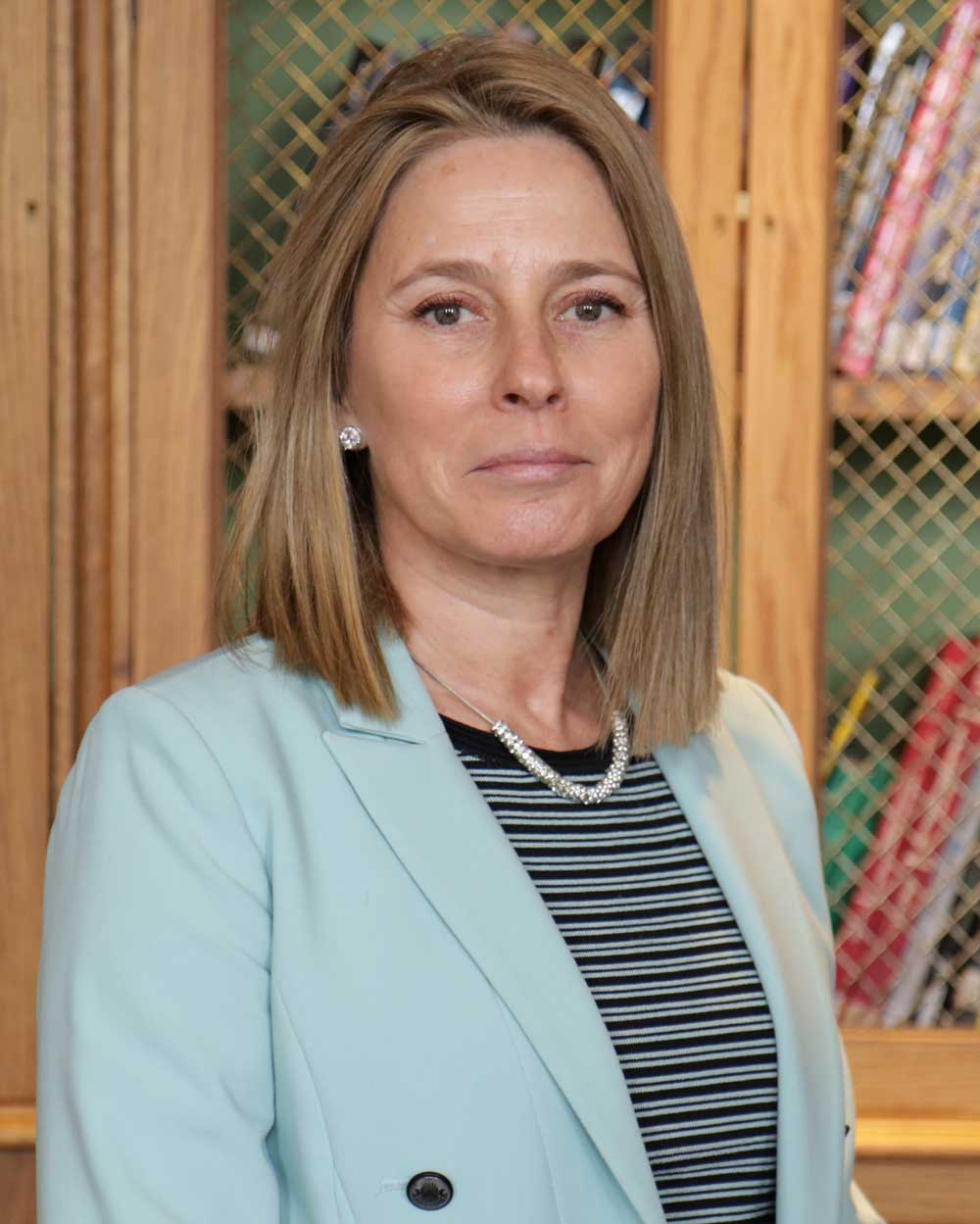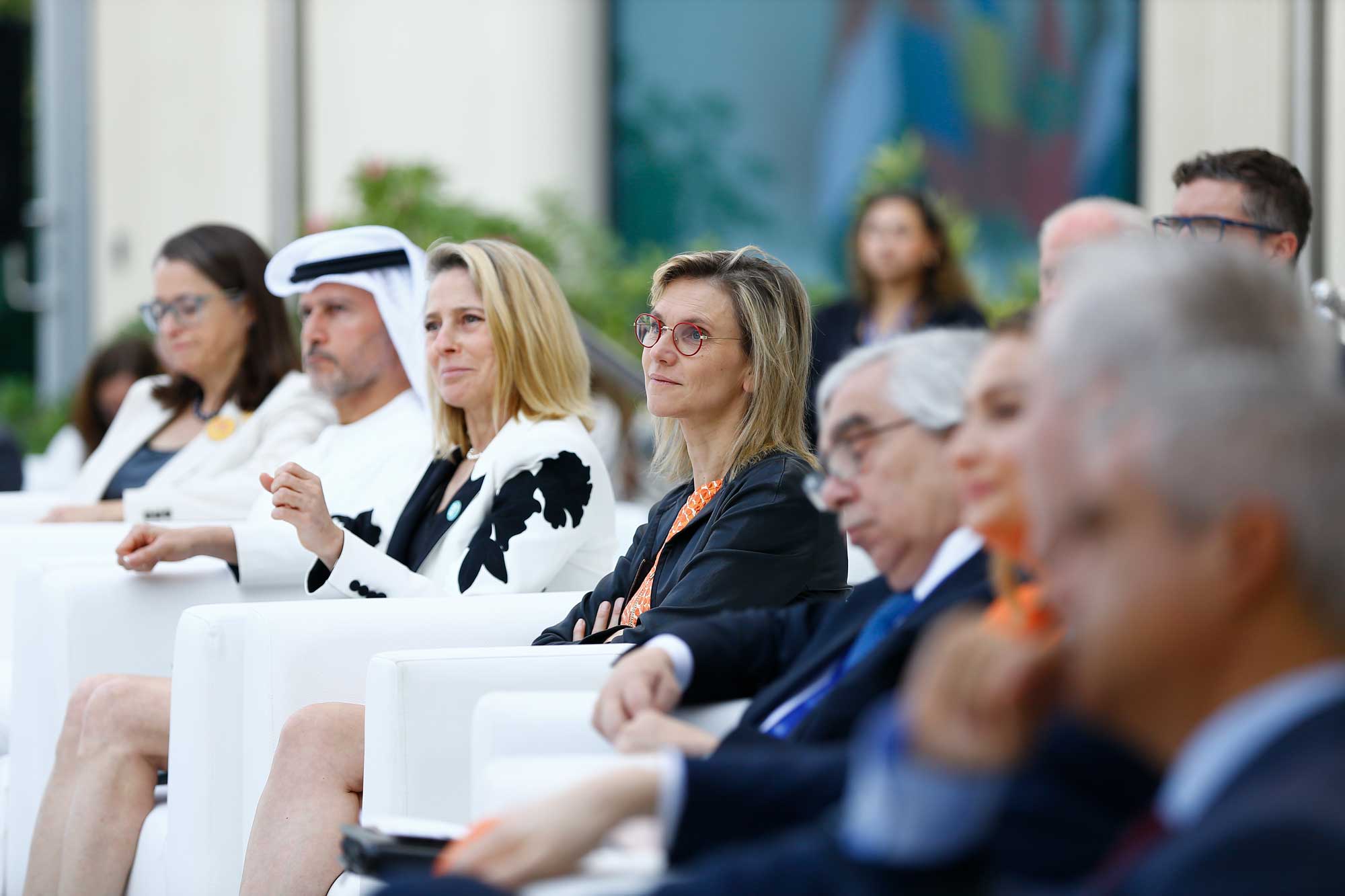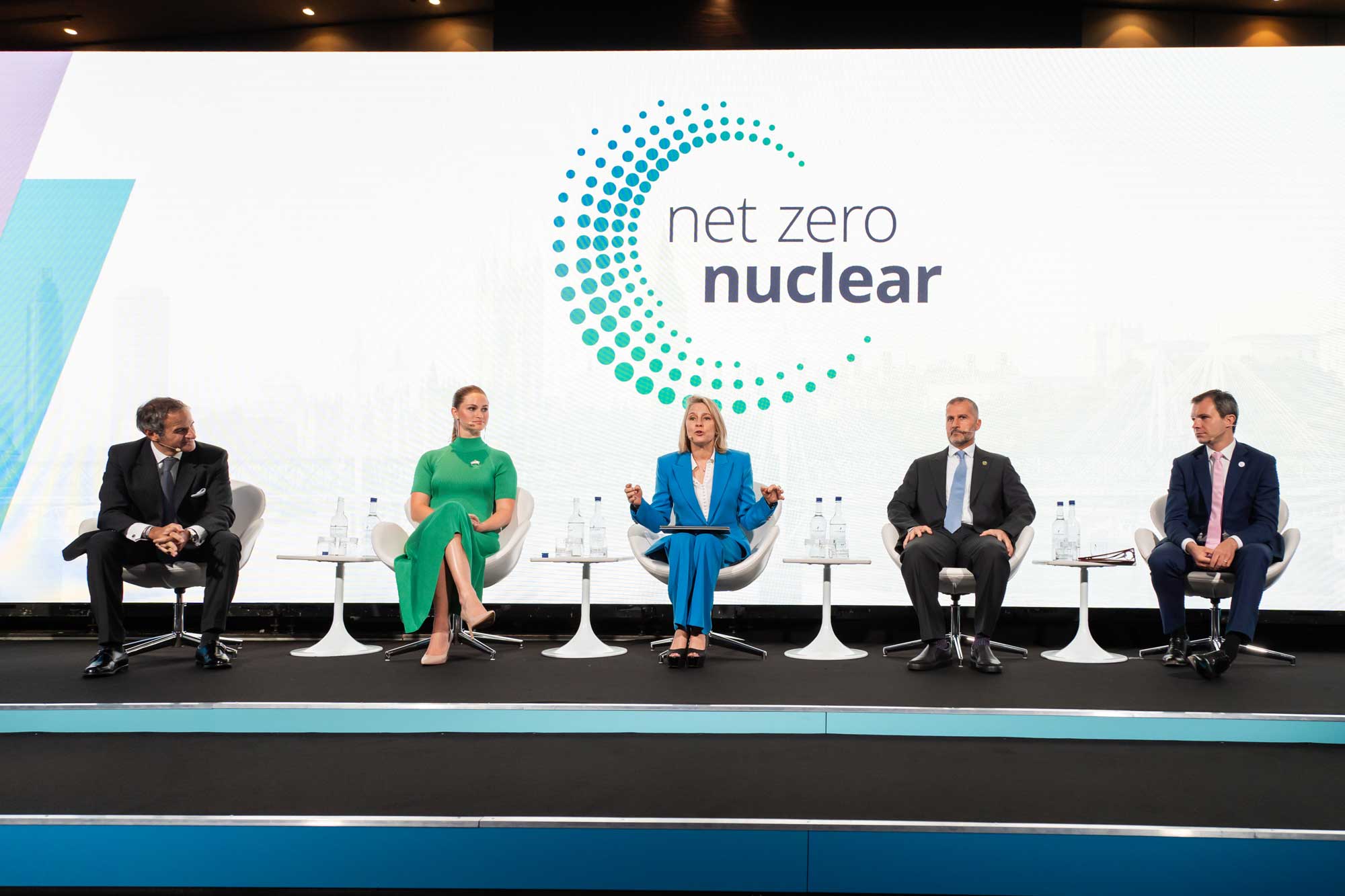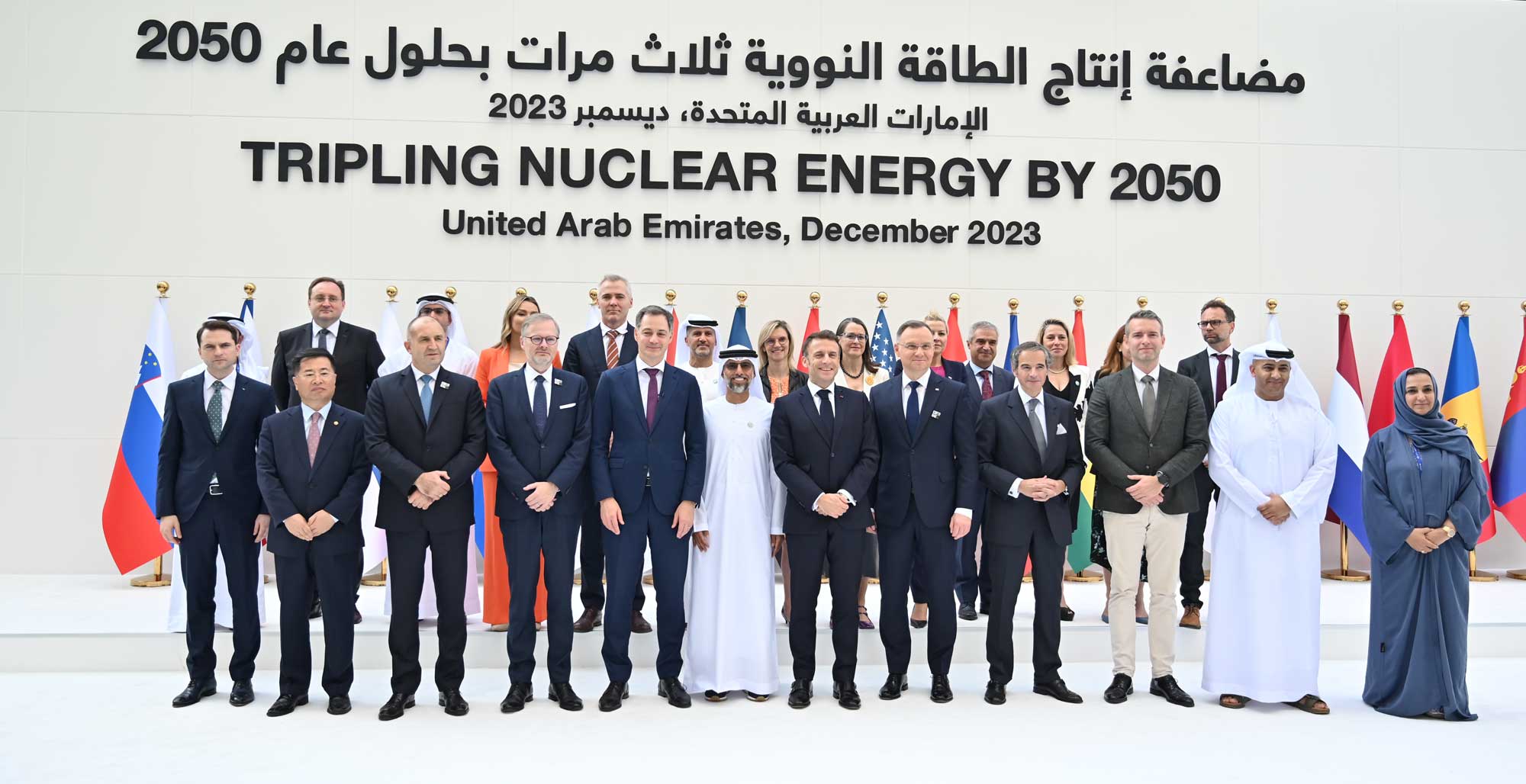WORLD NUCLEAR ASSOCIATION: Rapid Rollout Will See Global Nuclear Capacity Triple by 2050
Dr Sama Bilbao y León, Director General at World Nuclear Association is happy to announce the pledge of tripling nuclear capacity by 2050 by a group of 120 companies headquartered in 25 countries. The pledge, announced at the UN climate change conference, COP28 in Dubai, under the Net Zero Nuclear initiative launched with the Emirates Nuclear Energy Corporation, sets a goal of at least tripling global nuclear capacity to accelerate the clean energy transition.
At COP28 in Dubai, the nuclear industry came to the fore more than ever before. The world’s premier multilateral decision-making forum on climate change saw a pledge from various organisations across different regions to expand the contribution of nuclear in the world’s energy generation mix.
Today, 2545 TWh of electricity comes from nuclear generation. Most in the industry have known for some time, and many politicians have privately understood, that nuclear generation capacity must be increased if the climate crisis is to be tackled. Now, publicly, the message is clear. Triple capacity by 2050. To do so will require developing a thriving, highly skilled supply chain to support an efficient rollout. Use nuclear – a proven, reliable, safe industry – to feed growing demand, partnering with renewable energy, to create a low carbon energy mix.
Director General at the World Nuclear Association, Dr Sama Bilbao y León, tells Energy Focus that the landmark Net Zero Nuclear Pledge is ambitious and exciting.

Dr Sama Bilbao y León, Director General
“We must always be ambitious,” she smiles. “The climate crisis is urgent and enormous. The goals need to match the size of this problem. The fact we are putting in place what is necessary to make the ambition a reality is critical. Policies, financing frameworks, and industrial capabilities that are coming together is very important to deliver this expansion in nuclear energy.”
Fossil fuels – coal, oil, gas – burnt to produce energy release carbon dioxide and other harmful emissions. These industries are responsible for 75% of global greenhouse gas emissions and nearly 90% of CO2. It’s well documented that greenhouse gases in the atmosphere trap heat from the sun.
Nuclear generation produces large amounts of energy from a relatively small footprint, and minimal CO2 emissions across its whole lifecycle.
A desire for transition to low carbon generation, an energy security crisis, and a raft of pricing issues have turned many to the nuclear industry as a viable alternative to fossil fuels.
NET ZERO NUCLEAR
Alongside political leaders, industry heads, and government policy makers, Bilbao y León sat in Dubai at COP28, as nations committed to the goal to triple global nuclear capacity. Nuclear reactors provide 10% of global electricity, and demand for electricity is only going in one direction. By 2030, the International Energy Agency (IEA) expects there to be ten times the number of electric cars on roads. Growing generating capacity is essential, and doing so without fossil fuels brings nuclear to the fore.
“We, and various nuclear organisations, have been present at COP for over 20 years,” says Bilbao y León. “Initially, we were not well-received and, most often, nuclear was sidelined from conversations. But in the last few years, the conversations have been changing and since Glasgow (COP26), more and more countries are starting to realise that they will not achieve their climate goals without nuclear. After the energy crisis at the end of 2021, and the war in Ukraine, energy security became a priority again for many countries. For decades, after the oil crisis in the 70s, we forgot that energy security was something to consider.”
The Association has harnessed the resurgent positivity for nuclear and has developed a number of visibility campaigns, delivered across various platforms, to help build a collaborative effort.
“Net Zero Nuclear was launched together by World Nuclear Association and the Emirates Nuclear Energy Corporation (ENEC) ahead of COP28. ENEC is very well positioned, with close ties to the UAE government, and they were in a very strong position to be the intermediary with the COP28 Presidency,” says Bilbao y León.
“It was incredibly successful,” she adds. “For the first time ever at COP, nuclear was mentioned in the agreed and negotiated texts – everyone unanimously included nuclear as an energy to be accelerated if we are serious about meeting the Paris agreement goals. We talk to governments often enough, and behind closed doors there is always positive comments from ministers about nuclear – especially in the last few years. But to have 25 countries publicly state the importance of nuclear was new.”
The Net Zero Nuclear initiative was a continuation of work at previous COPs, which led to a very public Ministerial Declaration in December 2023 when heads of state from more than 20 countries placed nuclear at the heart of future plans, promising decarbonisation of entire economies. But there was more to come. An industry pledge to back up the overarching ministerial declaration, saw more than 120 countries active in some 140 countries, commit to at least triple global nuclear capacity.
“Industry wants to take the challenge from governments because, ultimately, governments will put in place policy and marketplace mechanisms, and perhaps will support financing frameworks, but it is the industry that will triple global nuclear capacity and will operate existing and future nuclear power plants,” highlights Bilbao y León.
She describes progress at COP28 as a 180-degree shift for nuclear, and from here the Association intends to move quickly, bringing support from 200 members on all continents and navigating a complicated geopolitical environment to encourage long-term certainty and collaboration.

ROLL OUT
The 2050 target gives just over a quarter-century to deliver on COP28 pledges. Currently a standard nuclear power plant takes on average around seven years to build. Time is precious and so having multiple technologies and different innovations in parallel are required to deliver on ambition.
“Clearly, we see that some regions and countries have their plans, but we don’t have an integrated global plan that shows exactly where the new capacity will come,” says Bilbao y León.
Already, there is progress around the world as demonstration projects in the US and Canada are underway. GE Hitachi Nuclear Energy, NuScale Power, and X-energy all have interesting projects – many are expected to be up and running before 2030. Czechia has large ambitions for brand new capacity, and China is pushing forward aggressively, building all kinds of reactors with all kinds of technology, aiming for 150 nuclear units by 2040. India has strong ambitions for nuclear energy, hoping to triple capacity by 2050, and the UK is aiming for quadrupling capacity by 2050. “We are expecting [new build] projects in Romania and Poland. Bangladesh is going from zero to 10% of electricity coming from carbon-free nuclear in less than 10 years. There are also 800 million people in Africa with no access to electricity -clearly there are enormous challenges – but nuclear has potential to meet some of that need in some of those countries. We know that not every country in the world will choose nuclear for their mix, but many will,” says Bilbao y León.
This progress is encouraging and feeds into the carefully planned capacity tripling to around 1200 GWe by 2050. Development of capacity tripling as a target comes from research commissioned by the Association and input from the team that produces the valuable World Nuclear Fuel Report – a comprehensive analysis of the global industry and fuel supply. Using information and predictions gleaned from the Fuel Report, different scenarios were predicted.
“There is a bottom-up and top-down approach,” explains Bilbao y León. “The bottom-up approach came from our Fuel Report from last September which has various scenarios. The scenarios are based on projects which come from things that we know about different countries and what they are planning. There are pessimistic and optimistic scenarios, and the middle of the road. Looking at the optimistic scenario, we are already seeing – based on known plans – that by 2040, we will have more than doubled nuclear capacity globally.”
The top-down approach looks at the goal of keeping a warming figure of 1.5°C and what needs to happen for that to be achieved.
“There are some planned scenarios and they are done by the IPCC, IEA and a Global Banking Network, and we are also working on our own scenarios. Across all of them, we see that nuclear energy must play an increased role in electricity generated globally by 2050 – for decarbonisation, grid stability, and 24/7 energy availability. So, the Net Zero Nuclear initiative and indeed the goal of tripling global nuclear capacity is about accelerating the clean energy transition.”
The detailed scenarios for Net Zero Nuclear from the Association will be available by the end of 2024, but both the top-down and bottom-up approaches are already accepted by many in the industry with the Director General confident that the organisation is on the right track.

KNOWLEDGE SHARE
World Nuclear Association goes above and beyond to involve industry and stakeholders as much as possible, hosting a number of Working Groups that go across the entire fuel cycle, detailing various opportunities that are available, as well as giving open and honest commentary on industry best practice. Extended collaboration is the goal, allowing members to grow and thrive through positive partnerships in the industry.
Bilbao y León is particularly proud of progress in recent working groups around skills development and project financing – both essential elements of the Net Zero Nuclear Pledge.
“We need to work on the workforce and that is where public-private partnerships will be very important,” she says. “Governments can incentivise education programmes in certain areas, and industry can invest here, but we are certain that there is a big opportunity to reskill and repurpose people for the clean energy workforce.”
As the contribution of fossil fuels – particularly oil and gas – steadily declines in OECD countries in line with international climate goals, the unique skillset of that workforce could be redeployed in the nuclear sphere to bolster ongoing global rollout. This, says the Association, is an obvious path for growth.
“We do not need to have a nuclear exclusive supply chain,” reiterates Bilbao y León. A nuclear reactor does require specialist knowledge and an increase level of Quality Assurance, but “the maintenance of a [nuclear] plant is not so different from other power plants. In my mind, there is enormous opportunity to take pieces of other supply chains where there are capabilities that could easily be realigned with nuclear and other energies. There are certainly opportunities there.”
Another working group is currently busy discussing the wider rollout of nuclear and how, beyond electricity generation, the industry can be a service provider for communities. This could be in the form of distributing heat, or planning small modular reactors (SMR) for industry, or helping with financing of nuclear-based projects, or researching and developing projects with contractual agreements in place. The Association’s board was keen to see this working group established so that knowledge sharing can thrive.
“We see major opportunity there,” she confirms. “We need to decarbonise the entire economy, not just electricity generation. The good news is that nuclear can produce heat at the same time as electricity and that can be used in district heating, manufacturing, steel, aluminium, petrochemical etc. We want to innovate, and we want to open discussions around the frameworks that will be required for the future. That group only started in September last year, but we are already seeing that eyes are opening and ideas are being generated.”
Another critical working group is deep in discussion around used nuclear fuel. A prominent point of uncertainty for many looking at the industry from the fringes, the way used nuclear fuel is managed is misunderstood. Bringing clarity and transparency to the industry is important. Key misconceptions include notions that nuclear power plants generate large amounts of waste and that the waste is useless. “Firstly, used fuel management is not a problem,” says Bilbao y León. “The industry is confident and the technologies exist today to handle used nuclear fuel – in many countries this is being done, and the working group is very good at sharing best practice. Secondly, the group is bringing visibility to the fact that used nuclear fuel is recyclable. 95% of the energy remains in what people often call ‘nuclear waste’. France, Japan and others are developing plans to reprocess used nuclear fuel and use it again. The energy that is still there means it can be made into new fuel and used in reactors.”
Currently, uranium is the key fuel for nuclear reactors, but is mined mainly from three countries around the world: Kazakhstan, Canada, and Australia. Smaller quantities are mined in other countries, but depressed pricing since 2011 slowed the opening of new sites for some time. However, today, prices are increasing again and many companies are looking at new activities. As the industry picks up and interest in the nuclear sector returns, the expectation is that new mines will start with uranium present abundantly on all continents. However, if a used nuclear fuel recycling industry can grow, it will ease the pressure on existing mines which is positive for the industry.
“The volumes and radiotoxicity will be reduced enormously if we are using most of the fuel rather than just 5%. Also, if we are re-using the resource, and getting the most out of it, then our need to mine for new material is reduced. We have stock in many interim repositories that could be reprocessed and represents significant new fuel for existing and used fleets. The sustainability of nuclear is all here. The fact we can do this means we have more energy and less waste, and this working group is highlighting this,” says Bilbao y León.
“France is already reprocessing and reusing reprocessed fuels in some units. Japan has the sustainability policy which requires the use of fuel to gain maximum energy. There are other countries doing so – it’s a matter of policy and not a matter of technology.”
POLICY OF PROMISE
Of course, tripling global nuclear capacity by 2050 requires more than skills and money. It is essential that regulation and policy are aligned, and nations collaborate effectively to encourage finance, engineering, construction, connectivity, and rollout. World Nuclear Association is the only industry organisation with a global mandate to promote nuclear energy. It is in a unique position to share and advance best practice and common messages globally, working alongside partner organisations and is encouraging long-term policy that appeals to the finance and investment community.
“There is need for financing in new nuclear construction, but there is also need for financing around the entire eco-system for nuclear,” explains Bilbao y León. “We are already seeing a lot of interest in mining at the front end of the nuclear fuel cycle. Also, conversion, enrichment, and fuel fabrication have all received a lot of interest. Across the supply chain, there are investible opportunities in piping, pumps, or many other heavy industrial engineering components. The level of investment can be very different and the speed of returns can also be very different. We are trying hard to make sure the finance community understands that there are different projects, open to different investors, with all appetites of financial risk.”
She adds that any policy must be suited to local conditions while incentivising technologies across the board. Typically, the finance community has been less knowledgeable about nuclear, and only the unsuccessful projects tend to gain newsworthy status. The Association’s working groups are addressing this, and showcasing positive examples that will filter through to those in charge of funds.
“We are making an effort to make clear what the opportunities are, and make sure the finance community understands that we can align different projects with different financial risk appetite of different investors.
“Sometimes the government doesn’t need to do much more – it can present the message that nuclear is here to stay and that clarity incentives both industry and finance to contribute.”
In the longer-term, a redesign of power markets is required to embrace a mix of technologies that includes less fossil fuel and more nuclear and renewable energy. Currently, the market is configured for a small number of individual technologies to contribute in a big way. Recognising the importance of dispatchable 24/7 clean tech, like nuclear, in the mix allow investors longer-term vision as to how ideas will come together to make a resilient next-generation energy system.
Of course, any redesign in the market must put the customer at the fore, ensuring the price is fair. The Director General sees coupling of electricity grids with oil and gas pipelines and hydrogen concepts, while using existing infrastructure to support renewable energy rollout. She also sees uniformity across regulators, allowing for easier and faster rollout while ensuring safety and independence. “We don’t have to repeat the same reviews and assessments across different countries where the same technology will be deployed. Licensing of standard technology should be streamlined globally.”
This idea comes back to policy and the ability of governments to give a clear, lasting roadmap. With certainty comes investment, and with investment comes progress. It’s a tried and tested model, evidenced by offshore wind energy policy in the UK.
“Renewable energy has come a long way, and that is because many governments highlighted it as essential,” says Bilbao y León. “Investments and innovation and industry have worked together to get to where we are, and that is fabulous. Nuclear energy is a proven technology and we have been doing this for more than 50 years. Newer technologies and different approaches are going to make nuclear better, but we are not starting from scratch. We are already 10% of global electricity generation and we have the largest contribution of clean electricity in OECD countries. We are also, in many countries, the cheapest form of energy generation. We don’t have to come from where renewables were. We can always improve, but it is from a well-established position.”

LINKING THE CHAIN
Apart from generating funding, the one major hurdle that could knock Net Zero Nuclear off course is a slowdown in development of a global supply chain. When the industry was nascent, a successful supply chain grew quickly – it is possible to develop the skills required. But the modern nuclear industry, and the rollout that will triple capacity by 2050, looks different to the sector of the past. Smoothing bottlenecks in the supply chain is vital, but Bilbao y León is characteristically confident.
“It is not an insurmountable challenge,” she states. “If you think about it, a lot of the components are not that different from a conventional gas power plant. There are many industries that are keeping their eyes on the nuclear industry because if they see that things are starting to happen, they invest in qualifying their products to be nuclear grade. We don’t have to build the industry from the ground up. In many cases, it is repurposed or requalify other industrial supply chains. It won’t be easy, but it’s not as impossible as many think.”
When success is obvious, advancement accelerates. There are several SMR projects happening globally as well as some larger reactors, and when they reach completion, it will be clear to the entire industry, and related sectors, that work in nuclear is a significant opportunity.
“In nuclear, as in many other industries, everyone is conservative and wants to be second. It is good that we have some pioneers who are willing to be first, and it is important that they succeed. When we see this, the traditional nuclear supply chain will invest in itself because they will see the path forward,” says Bilbao y León.
Discussions are already underway with suppliers exploring the use of nuclear alongside other major industry sectors to drive decarbonisation campaigns. In the oil and gas sector, scope 1 and 2 emissions must be reduced dramatically, and quickly. Nuclear has the ability to drive reductions at the front end of production. If paired with CCUS and other modern systems, supply chains and nuclear technology have the ability to achieve further carbon reductions.
“The money exists and the appetite is there,” Bilbao y León smiles.
“It is the same in the chemical industry. We have already seen DOW Chemical talking with nuclear developers for specific units. We have also seen Microsoft, Google, and Amazon saying they already need enormous amounts of incredibly reliable electricity, with little variability, and accessible 24/7. That demand will increase drastically as they make more use of AI and data driven technologies. They are all thinking of how they can get this energy and they are all talking about how they can access long-term power purchase agreements to access electricity.”
With the level of electrification underway now, tripling global nuclear capacity by 2050 must be seen as integral part of the energy transition. New build projects will come in different forms – some traditional utility grid-based power plants and others innovative modern reactor projects – and some will be driven by the private sector and companies that need supply to fulfil critical operations. However, after COP28 and as a result of the successful Net Zero Nuclear initiative, the Association is pleased that there is no doubt about nuclear’s involvement in the global mix going forward – government and industry heads are providing exactly what Dr Bilbao y León has asked for – long-term certainty.
“For the majority of countries that we speak to, the question is not whether nuclear is part of the equation – that question has been answered. Yes – nuclear is part of the global energy mix moving forward. What we need to do is make it happen. Much needs to be done and there are challenges ahead, so the question is not whether but how we do it,” she concludes.
Now is the time for rapidly accelerating all corners of the nuclear industry. Developing supply chains, formalising financing frameworks, putting progressive policies in place, and creating capacity for the future. The pledges and promises are in place. World Nuclear Association and its membership are ready to deliver.
